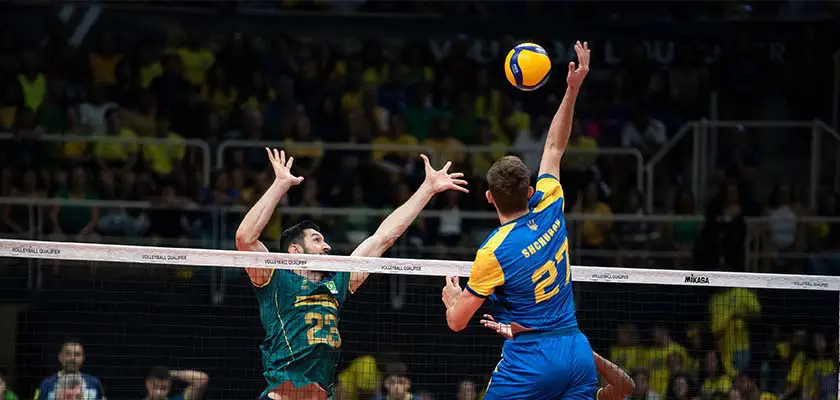Did you know that players need to respect the volleyball positions on the court? It may seem a bit complex to understand, but we’ve produced this up-to-date and complete guide just to help you.
First, we’ll introduce you to the sport’s positioning, taking into account the geographical layout of the court. These positions are numbered and range from 1 to 6, i.e. the exact number of starters in a volleyball match.
Next, we’ll explain the volleyball roles, such as setter, opposite hitter and libero. These roles go beyond spatial distribution and concern the player’s responsibilities within the tactical scheme.
Finally, we’ll mention the players (Brazilian and international) who were most successful in each of these roles – just out of curiosity.
Check them out 👇
Volleyball positions
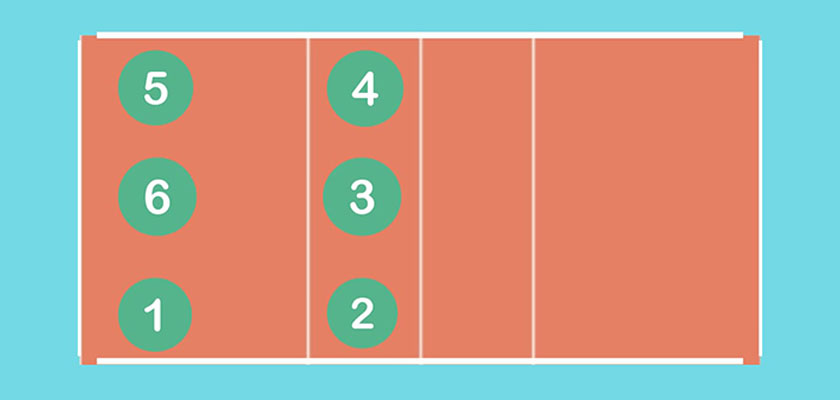
- Position 1 – Right defense (serve)
- Position 2 – Net outlet
- Position 3 – Middle of the net
- Position 4 – Net entry
- Position 5 – Left defense
- Position 6 – Central defense.
The positions in volleyball take into account a numerical order from 1 to 6. This convention was used to make it easier to see the rotation on the court.
Position number 1 is the serve, also known as the right back. This is followed by the attacking positions (2, 3, 4), which are called net outlet, net middle and net entry respectively. Completing the geographical layout are positions 5 (left defense) and 6 (right defense).
You may have noticed in the image above that there is a line three meters away from the net that divides the team area into two sectors:
- Defense zone – Positions 1, 6 and 5
- Attacking zone – Positions 2, 3 and 4
Players who start the point in the defense zone may only attack behind the line of three. If they encroach or step on the mark, the match referee will call an offensive foul. The point then goes to the opponent.
Volleyball rotation
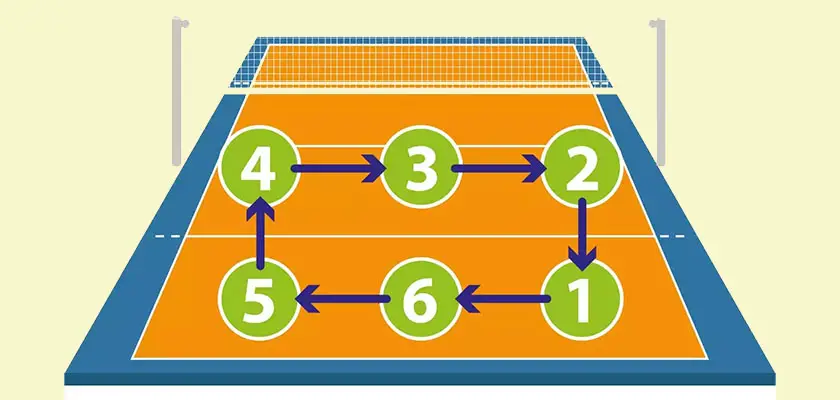
The rotation is a mechanism that is intrinsically linked to volleyball positions. With it, the players change places clockwise.
Every time someone serves, the rotation takes place. Whoever was in position 2 goes to position 1. Whoever was in position 6 goes to position 5. And so on. The image above illustrates this movement well.
It’s worth noting, however, the following situation: if a player has served and his team has scored, he will serve again, but his team will not rotate. The rotation will only resume when another teammate serves.
The players must respect their original positions until the server strikes the ball. After the hit, the players can go anywhere on the court. This is very important, as everyone has a different role.
A setter, for example, plays by feeding his attacking colleagues. If he starts at position 5 and stays there, he won’t be able to play his role because he’ll be too far from the net and his attacking teammates.
It’s worth noting, however, that players who start in the defense zone can only attack behind the three-man line. Otherwise, a foul will be called.
That’s it! We’ve introduced you to the functions of volleyball and now we’re going to break down each of the sport’s five roles: setter, libero, opposite hitter, outside hitter and middle blocker.
Player roles
- Setter
- Opposite hitter
- Outside hitter
- Middle blocker
- Libero
Setter
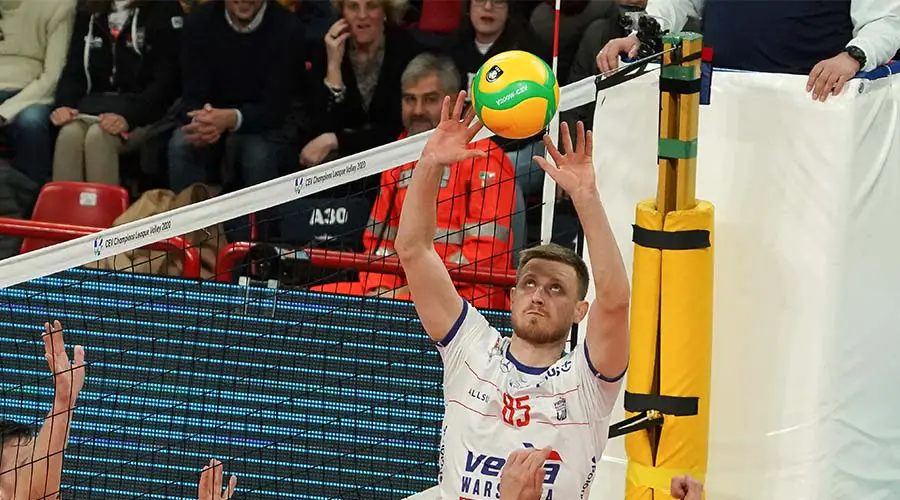
The setter specializes in lifting balls for teammates to attack. He usually uses the passing technique to do this.
Players in this position need to be creative, technical and intelligent in order to read the play and find the best pass.
Under no circumstances should setter take part in receiving the opponent’s serve, because if they do, they won’t be able to perform the second touch of the attacking move, which is precisely the lift.
In terms of positioning on the court, the setter always hangs around the central part of the court, preferably near the net. This way, he has enough reaction time to choose which teammate to give the ball to.
Greatest volleyball setters of all time
- Fernanda Venturini (Brazil)
- Fofão (Brazil)
- Marlenis Costa (Cuba)
- Nikola Grbic (Serbia)
- Pawel Zagumny (Poland)
- Ricardinho (Brazil)
Opposite hitter
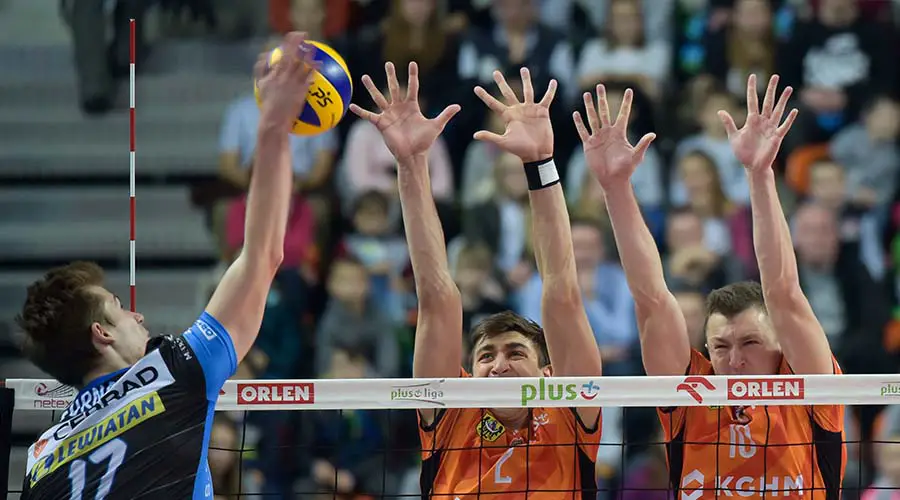
Of all the positions in volleyball, the opposite hitter is the most offensive. He doesn’t take part in serve receptions and likes to attack from the ends of the court.
It gets its name because the opposite hitter is always in the opposite position to the setter. In other words, if the setter is in position 1, the opposite is in position 4.
Players in this position need to be tall and very effective with high, fast and backcourt balls. Their preferred positions are 2 and 4.
It’s worth remembering that the opposite hitter is only used in the 5-1 system, which is the most popular in volleyball. He doesn’t play in 6-0 or 4×2 formations, for example.
Greatest volleyball opposite hitters of all time
- Marcelo Negrão (Brazil)
- Marco Bracci (Italy)
- Maxim Mikhaylov (Russia)
- Ron Zwerver (Netherlands)
- Sheilla Castro (Brazil)
- Tijana Bošković (Serbia)
Outside hitter
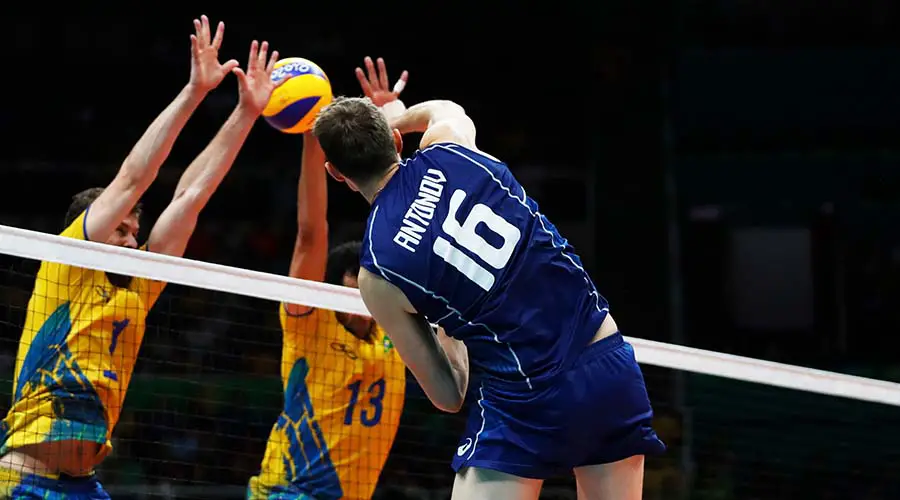
The outside hitter is the most complete player in volleyball, as he needs to master both attacking and defensive fundamentals. Unlike the opposite hitter, they take part in receiving opponent’s serves.
Teams usually play with two outside hitters in opposite positions, precisely to have an athlete in each area of the court.
The outside hitter main specialty is attacking quickly from the baseline. Therefore, their preferred positions are 2 (net exit) and 4 (net entrance).
Historically, outside hitter are the players who stand out most in volleyball, as they take part in all the action in the match.
Greatest volleyball outside hitters of all time
- Giba (Brazil)
- Hugo Conte (Argentina)
- Karch Kiraly (United States)
- Lang Ping (China)
- Mireya Luis (Cuba)
- Lorenzo Bernardi (Italy)
Middle blocker
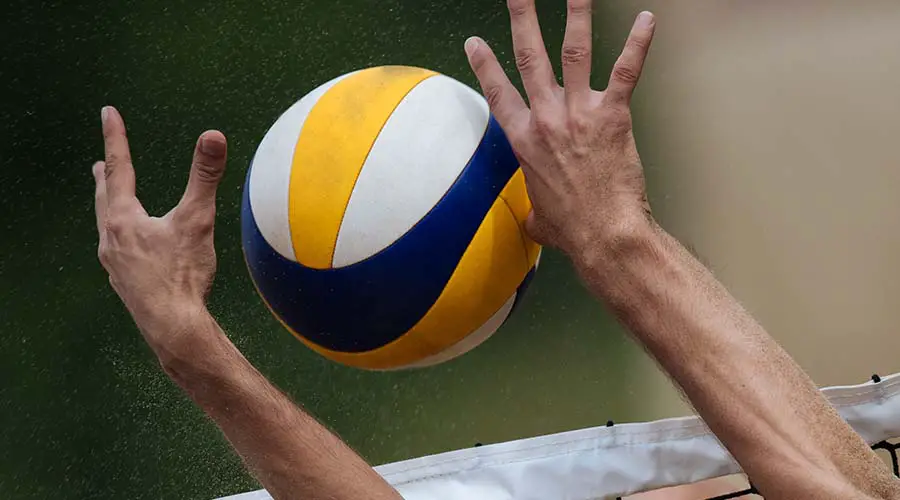
The middle blocker plays in the middle of the net, i.e. position 3. Players in this position are usually the tallest and heaviest players on the team.
Middle blockers don’t take part in reception, but they are excellent blockers. Their best attacking weapon is the fast ball through the middle.
When the middle blocker arrives in position 1, he participates in the serve, but at the next point he is replaced by the libero, only to return in position 4.
Greatest volleyball middle centers of all time
- Ana Fernández (Cuba)
- Andrea Giani (Italy)
- Gustavo Endres (Brazil)
- Inna Ryskal (Russia)
- Regla Torres (Cuba)
- Tomasz Wójtowicz (Poland)
Libero
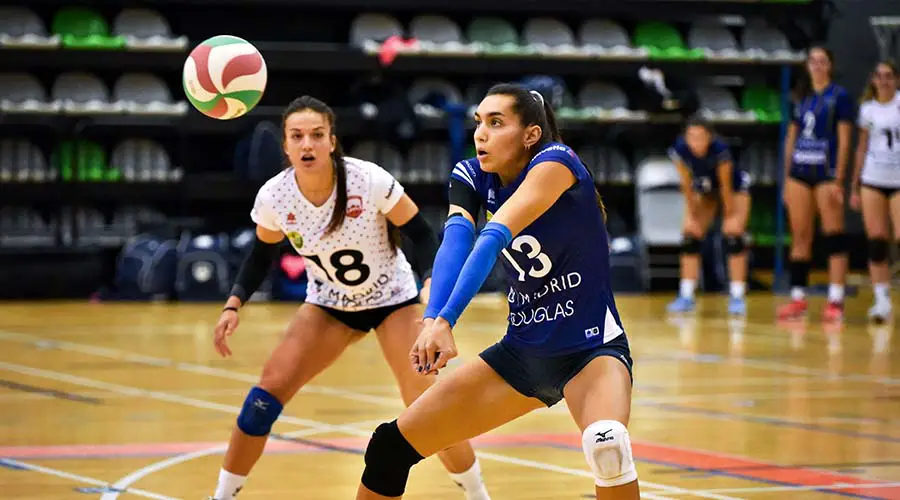
The libero is the most modern position in the sport, having only been created in 1998. Of all the volleyball positions, it is the most defensive.
Liberoes can only play in the defensive zone, i.e. positions 1, 6 and 5. They are not allowed to serve, attack or lift balls using the touch.
Players in this position need to be extraordinary in their handling and positional sense in order to receive serves, pass good balls to the setter and cover their attacking teammates.
When the libero reaches position 4, he is automatically replaced by another line player without the need for prior warning.
Liberoes are short in stature and play in a different colored jersey, precisely to make it easier to identify them on the court.
Greatest volleyball liberos of all time
- Erik Shoji (United States)
- Fabiana Alvim (Brazil)
- Jenia Grebennikov (France)
- Paweł Zatorski (Poland)
- Serginho (Brazil)
- Yuko Sano (Japan)
So, did you enjoy getting to know the volleyball positions? Which one is your favorite? Tell us in the comments! Your participation is always welcome 👊
Keep following us every day for more guides, news, articles and analysis on Olympic sports and video games!


